Abstract
STUDY OBJECTIVE--To study the significance of a young person's health to his or her choice of further education at age 16. DESIGN--A cross sectional population survey SETTING--The whole of Finland. PARTICIPANTS--A representative sample of 2977 Finnish 16 year olds. The response rate was 83%. MEASUREMENTS AND MAIN RESULTS--The three outcome variables reflected successive steps on the way to educational success: school attendance after the completion of compulsory schooling, the type of school, and school achievement for those at school. Continuing their education and choosing upper secondary school were most typical of young people from upper social classes. Female gender and living with both parents increased the probability of choosing to go on to upper secondary school. Over and above these background variables, some health factors had additional explanatory power. Continuing their education, attending upper secondary schools, and good achievement were typical of those who considered their health to be good. Chronically ill adolescents were more likely to continue their education than the healthy ones. CONCLUSIONS--School imposes great demands on young people, thus revealing differences in personal health resources. Adaptation to the norms of a society in which education is highly valued is related to satisfying health status. In a welfare state that offers equal educational opportunities for everyone, however, chronically ill adolescents can add to their resources for coping through schooling. Health related selection thus works differently for various indicators of health and in various kinds of societies. Social class differences in health in the future may be more dependent on personally experienced health problems than on medically diagnosed diseases.
Full text
PDF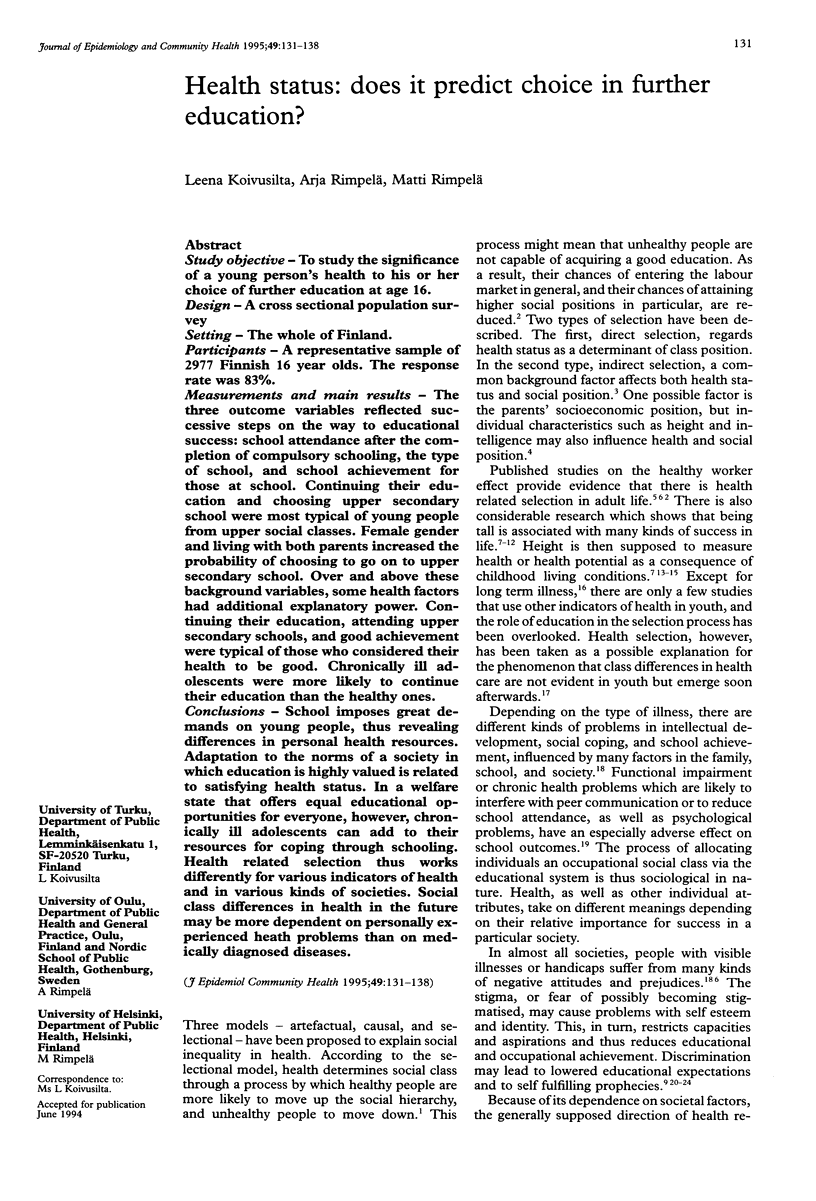
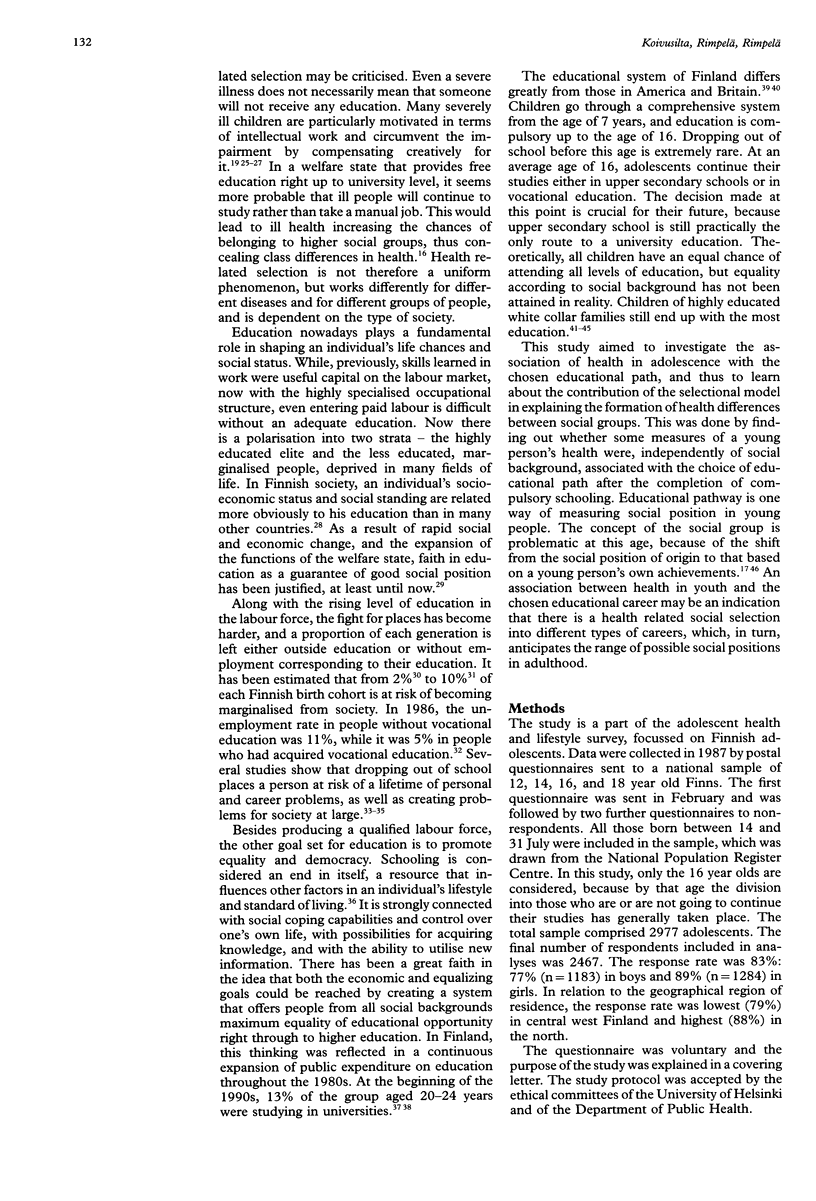
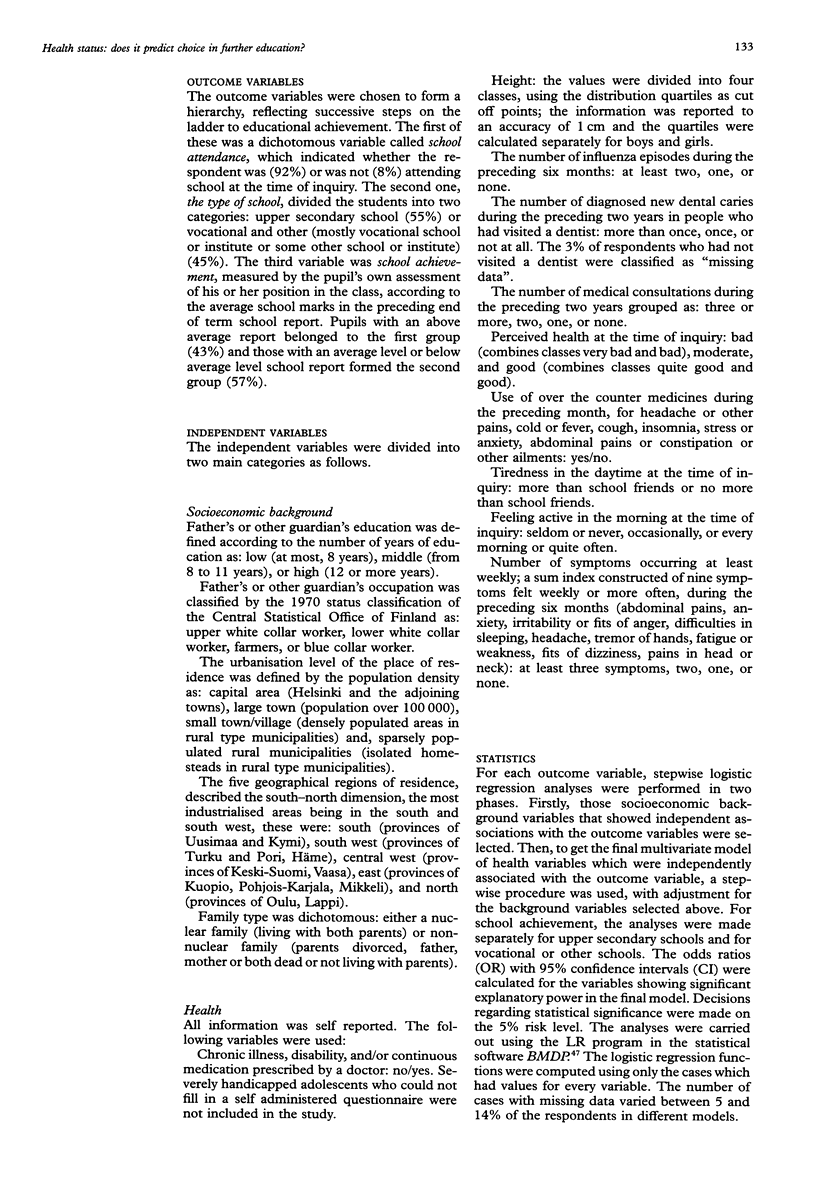

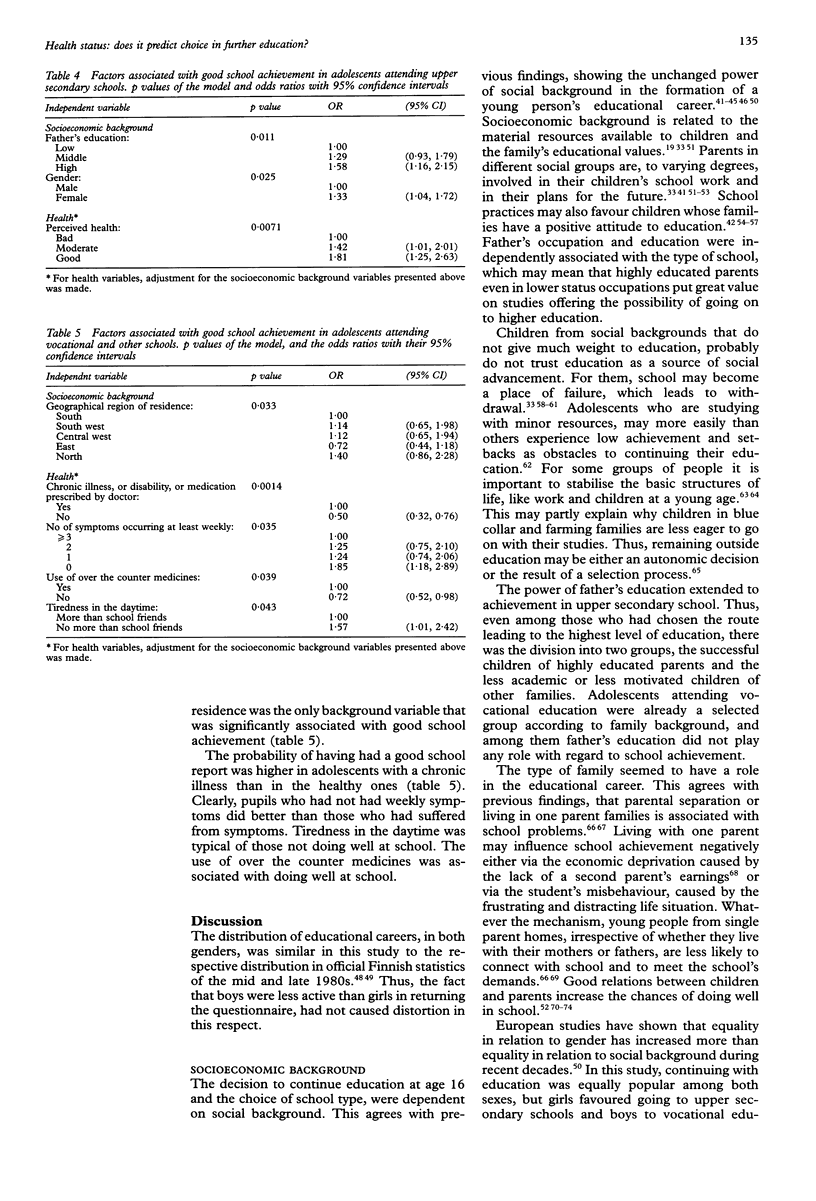

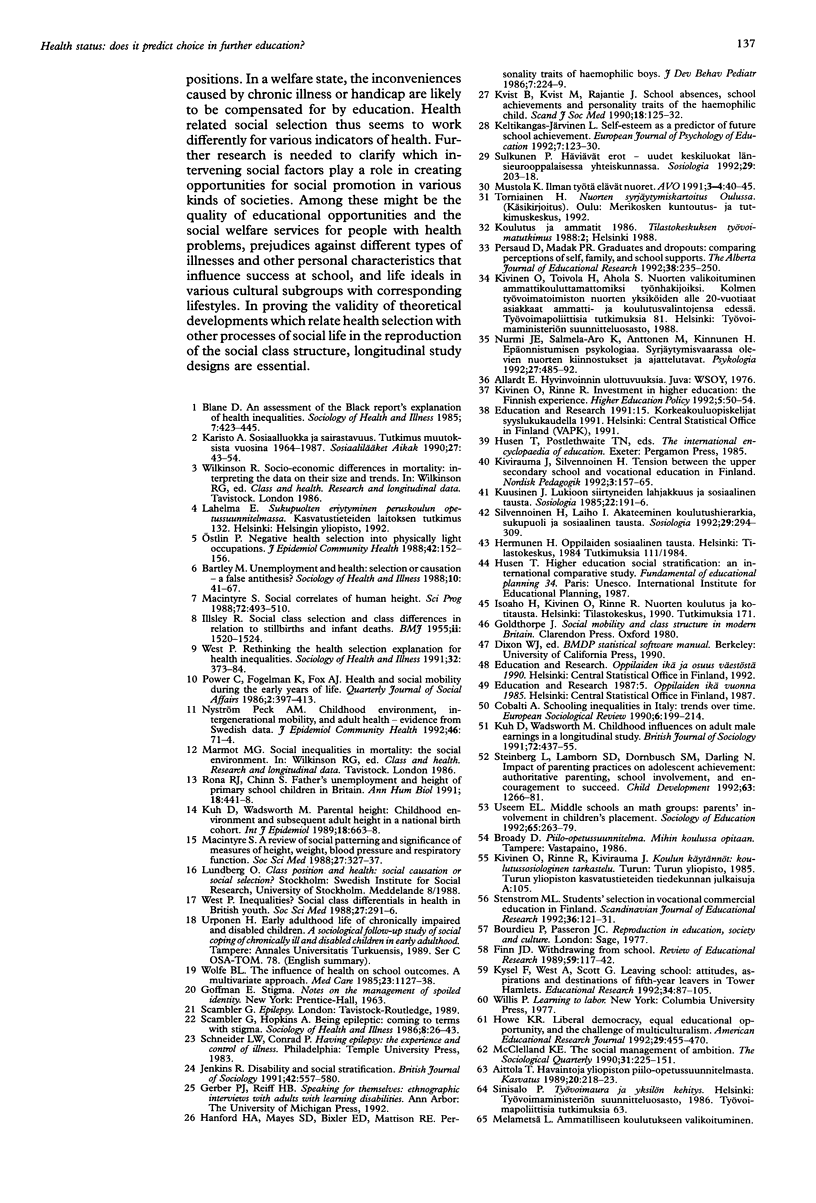
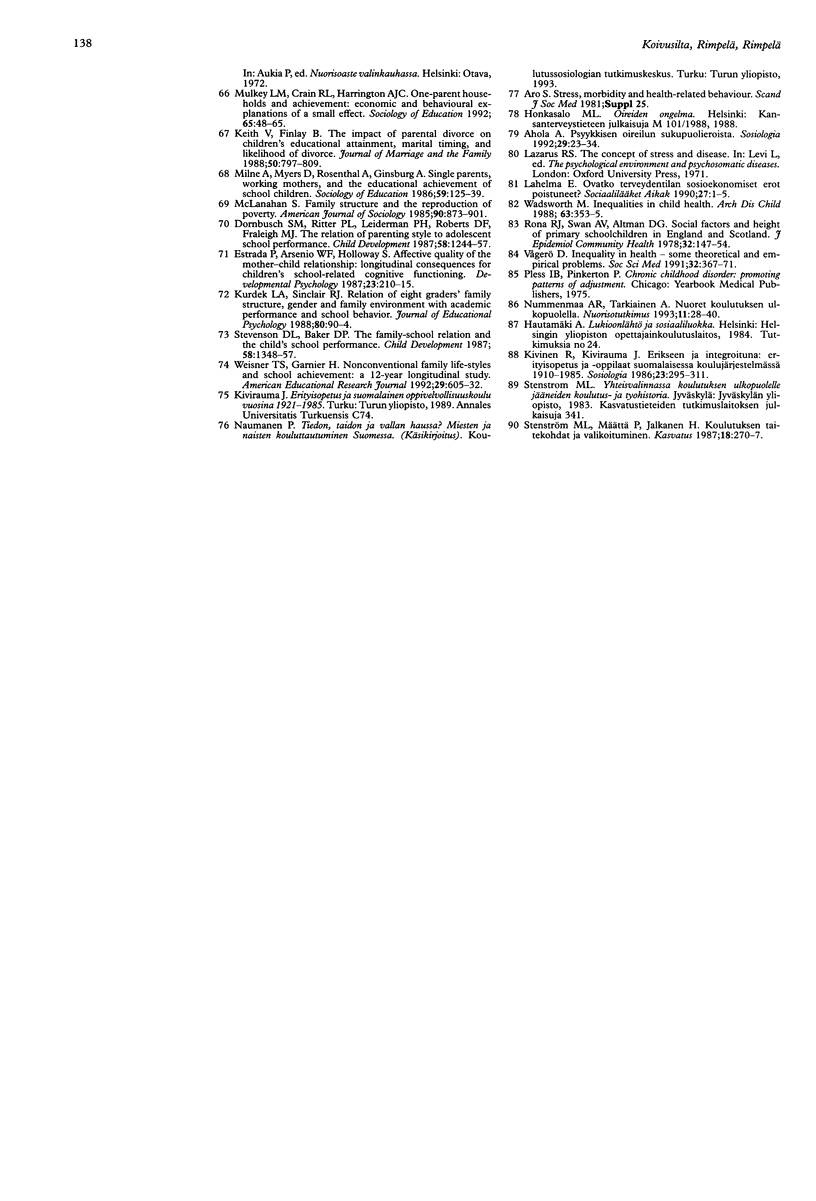
Selected References
These references are in PubMed. This may not be the complete list of references from this article.
- Dornbusch S. M., Ritter P. L., Leiderman P. H., Roberts D. F., Fraleigh M. J. The relation of parenting style to adolescent school performance. Child Dev. 1987 Oct;58(5):1244–1257. doi: 10.1111/j.1467-8624.1987.tb01455.x. [DOI] [PubMed] [Google Scholar]
- Handford H. A., Mayes S. D., Bixler E. O., Mattison R. E. Personality traits of hemophilic boys. J Dev Behav Pediatr. 1986 Aug;7(4):224–229. doi: 10.1097/00004703-198608000-00002. [DOI] [PubMed] [Google Scholar]
- ILLSLEY R. Social class selection and class differences in relation to stillbirths and infant deaths. Br Med J. 1955 Dec 24;2(4955):1520–1524. doi: 10.1136/bmj.2.4955.1520. [DOI] [PMC free article] [PubMed] [Google Scholar]
- Jenkins R. Disability and social stratification. Br J Sociol. 1991 Dec;42(4):557–580. [PubMed] [Google Scholar]
- Kuh D., Wadsworth M. Parental height: childhood environment and subsequent adult height in a national birth cohort. Int J Epidemiol. 1989 Sep;18(3):663–668. doi: 10.1093/ije/18.3.663. [DOI] [PubMed] [Google Scholar]
- Kvist B., Kvist M., Rajantie J. School absences, school achievements and personality traits of the haemophilic child. Scand J Soc Med. 1990 Jun;18(2):125–132. doi: 10.1177/140349489001800206. [DOI] [PubMed] [Google Scholar]
- Macintyre S. A review of the social patterning and significance of measures of height, weight, blood pressure and respiratory function. Soc Sci Med. 1988;27(4):327–337. doi: 10.1016/0277-9536(88)90266-3. [DOI] [PubMed] [Google Scholar]
- Macintyre S. Social correlates of human height. Sci Prog. 1988;72(288 Pt 4):493–510. [PubMed] [Google Scholar]
- Nyström Peck A. M. Childhood environment, intergenerational mobility, and adult health--evidence from Swedish data. J Epidemiol Community Health. 1992 Feb;46(1):71–74. doi: 10.1136/jech.46.1.71. [DOI] [PMC free article] [PubMed] [Google Scholar]
- Ostlin P. Negative health selection into physically light occupations. J Epidemiol Community Health. 1988 Jun;42(2):152–156. doi: 10.1136/jech.42.2.152. [DOI] [PMC free article] [PubMed] [Google Scholar]
- Rona R. J., Chinn S. Father's unemployment and height of primary school children in Britain. Ann Hum Biol. 1991 Sep-Oct;18(5):441–448. doi: 10.1080/03014469100001742. [DOI] [PubMed] [Google Scholar]
- Rona R. J., Swan A. V., Altman D. G. Social factors and height of primary schoolchildren in England and Scotland. J Epidemiol Community Health. 1978 Sep;32(3):147–154. doi: 10.1136/jech.32.3.147. [DOI] [PMC free article] [PubMed] [Google Scholar]
- Steinberg L., Lamborn S. D., Dornbusch S. M., Darling N. Impact of parenting practices on adolescent achievement: authoritative parenting, school involvement, and encouragement to succeed. Child Dev. 1992 Oct;63(5):1266–1281. doi: 10.1111/j.1467-8624.1992.tb01694.x. [DOI] [PubMed] [Google Scholar]
- Stevenson D. L., Baker D. P. The family-school relation and the child's school performance. Child Dev. 1987 Oct;58(5):1348–1357. doi: 10.1111/j.1467-8624.1987.tb01463.x. [DOI] [PubMed] [Google Scholar]
- Vågerö D. Inequality in health--some theoretical and empirical problems. Soc Sci Med. 1991;32(4):367–371. doi: 10.1016/0277-9536(91)90337-c. [DOI] [PubMed] [Google Scholar]
- Wadsworth M. E. Inequalities in child health. Arch Dis Child. 1988 Apr;63(4):353–355. doi: 10.1136/adc.63.4.353. [DOI] [PMC free article] [PubMed] [Google Scholar]
- West P. Inequalities? Social class differentials in health in British youth. Soc Sci Med. 1988;27(4):291–296. doi: 10.1016/0277-9536(88)90262-6. [DOI] [PubMed] [Google Scholar]
- West P. Rethinking the health selection explanation for health inequalities. Soc Sci Med. 1991;32(4):373–384. doi: 10.1016/0277-9536(91)90338-d. [DOI] [PubMed] [Google Scholar]
- Wolfe B. L. The influence of health on school outcomes. A multivariate approach. Med Care. 1985 Oct;23(10):1127–1138. doi: 10.1097/00005650-198510000-00001. [DOI] [PubMed] [Google Scholar]


